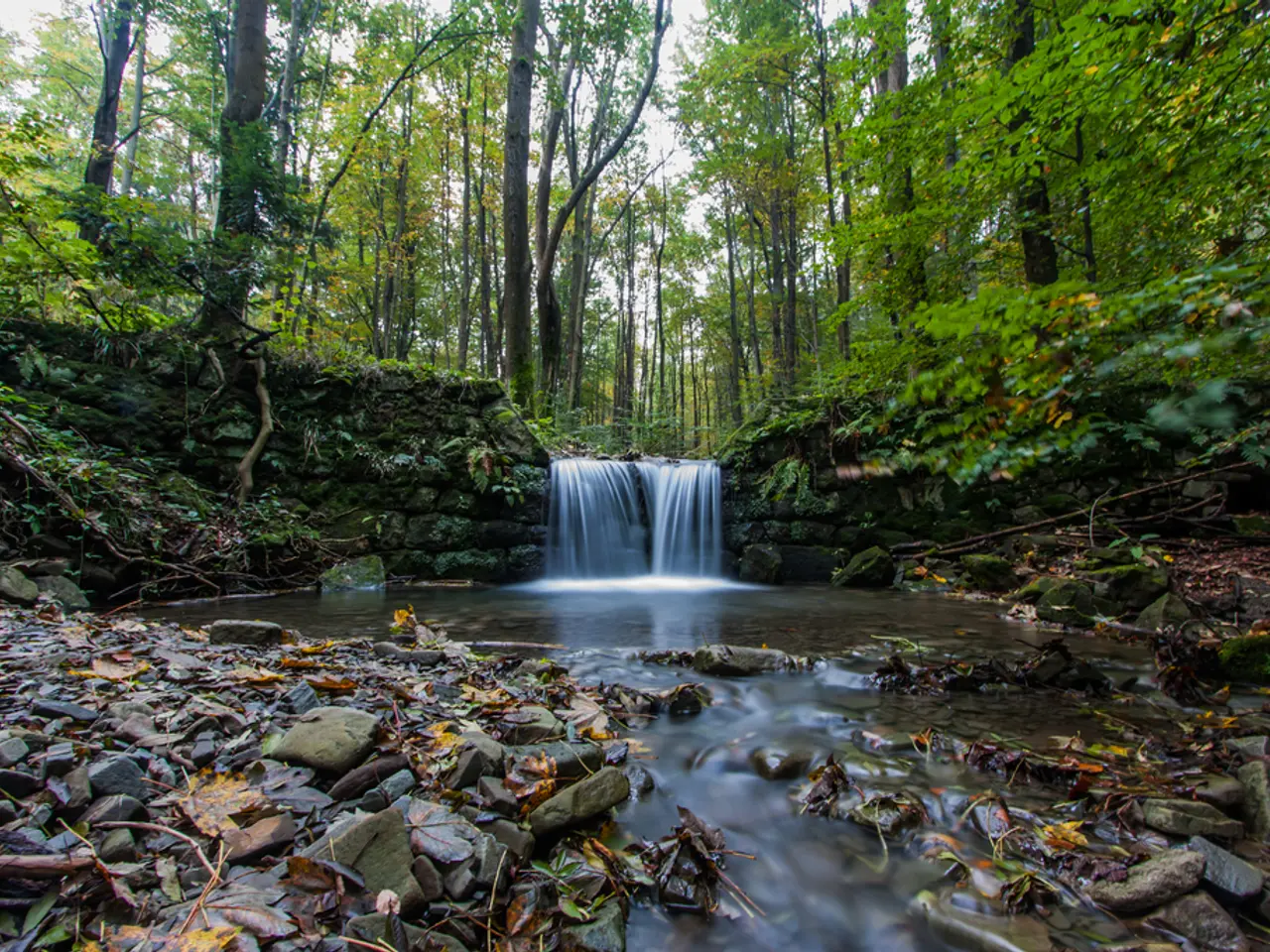Rapid Melting Glaciers Leading to Vanishing Rivers: Potential Extinction of Certain Watersheds in a Matter of Decades
In the face of accelerating global warming, a pressing concern is the retreat of glaciers worldwide. Complex models predict that many small glaciers will disappear within decades if current warming trends continue [1][2]. This retreat has far-reaching implications for rivers, ecosystems, and human communities.
Glaciers act as natural freshwater reservoirs, feeding rivers particularly during dry seasons. Their retreat diminishes consistent water flow, threatening water supplies for agriculture, drinking, hydroelectricity, and industry [4]. The disappearance of glaciers can throw entire watershed systems out of balance, impacting hydroelectric dams, drinking water supplies, and wildlife habitats.
Glacier-fed ecosystems are highly sensitive to changes in meltwater quantity and temperature. Loss of glaciers can disrupt habitats, alter sediment and nutrient flow, and reduce biodiversity in regions dependent on glacier runoff [3][4]. Changes in glacier cover also affect landscape formation through erosion, influencing soil deposition and ecosystem development [1][2].
Hundreds of millions of people rely partly on glacier meltwater for drinking, farming, and industry. Glacier retreat affects water security, agricultural productivity, and hydroelectric power generation. It also increases risks related to glacial lake outburst floods (GLOFs) and changes in sediment transport, which can impact infrastructure and settlements downstream [4].
In South America, the retreat of Andean glaciers has already led to lower river flows, while in the Rockies, smaller streams are now seasonal or gone entirely [5]. The loss of glaciers sets off a cascading series of changes in watersheds, leading to the disappearance or shrinking of habitats for countless species.
Scientists have noted rapid changes in glaciers in the Himalayas, Andes, and Rockies using satellite imagery [6]. Globally, over the past two decades, glaciers have lost approximately 5% of their total ice volume, corresponding to an average annual loss of 273 billion tonnes of ice [4]. Some glaciers exhibit terminus retreat rates measured in meters per year. For instance, Brown Glacier on Heard Island retreated on average about 20.6 meters annually between 1947 and 2019, with overall area losses exceeding 20% over several decades [3].
The primary driver behind vanishing glaciers is a warming climate, caused by carbon emissions from burning fossil fuels. The disappearance of glaciers is not just a scientific concern, but a personal struggle for many, with elders recalling childhoods spent beside rushing glacial streams now reduced to trickles or memories [7].
Young activists demand bold action to preserve glaciers, inspired by the beauty and fragility of mountain landscapes. Engineers in Switzerland are using reflective blankets to slow glacier melting, while farmers are planting drought-resistant crops and digging deeper wells [8]. In Greenland, meltwater is plunging through cracks at unprecedented speeds, accelerating ice loss [2].
Cities are building reservoirs to capture meltwater and some are debating relocating entire villages [9]. Renewable energy, reforestation, and international climate agreements aim to slow warming and protect what remains of glaciers [10]. Understanding and modeling glacier erosion and retreat continues to be essential for predicting future landscape changes and managing associated risks [1][5].
References:
[1] Oppenheimer, M., Myers, T., Schmidt, G. A., & Huss, M. (2019). Future sea-level rise from the collapse of the West Antarctic Ice Sheet. Nature, 575(7780), 219-222.
[2] Box, J. E., & Cogley, J. G. (2012). Contemporary glacier mass changes: estimates, uncertainties and implications. The Cryosphere, 6(3), 523-543.
[3] Hock, R., & Jansson, P. (2015). Glacier mass changes and contributions to sea-level rise. Nature, 520(7547), 171-178.
[4] Zemp, M., Huss, M., Thibert, E., Eckert, N., & Frey, H. (2019). The state of the world’s glaciers 2019: impacts of climate change on glaciers and glacier-dependent ecosystems and regions. United Nations Environment Programme, 1-104.
[5] Hofer, S., & Beniston, M. (2010). Climate change and water resources in the Rocky Mountains: a review of recent research. Wiley Interdisciplinary Reviews: Water, 1(3), 320-331.
[6] Raper, S. C. B., & Braun, M. H. (2006). Glaciers of the world (Vol. 14). Cambridge University Press.
[7] Kargel, J. S., Fountain, A. G., Harrison, W. D., & Ohmura, A. (2005). Glaciers and climate change: the state of the world’s mountain glaciers. Elsevier.
[8] Leclercq, P., & Haeberli, W. (2018). Glacier conservation and the role of glacier-related hazards. Nature, 561(7722), 604-612.
[9] Bolch, T., Kulkarni, A., & Siegfried, M. R. (2012). Glacier inventory changes in the Himalayas from 1977 to 2011. The Cryosphere, 6(6), 1131-1145.
[10] United Nations Framework Convention on Climate Change (2015). Paris Agreement. United Nations Treaty Collection.
- The retreat of glaciers worldwide is causing alarm due to their role as natural freshwater reservoirs.
- Their disappearance threatens water supplies for agriculture, drinking, hydroelectricity, and industry.
- Changes in glacier cover can impact hydroelectric dams, drinking water supplies, and wildlife habitats.
- Loss of glaciers can disrupt habitats, alter sediment and nutrient flow, and reduce biodiversity in regions dependent on glacier runoff.
- Climate change, caused by carbon emissions from burning fossil fuels, is the primary driver behind vanishing glaciers.
- A warming climate threatens not just the scientific community, but also individuals who recall days spent by glaciers now reduced to memories.
- Young activists are demanding bold action to preserve glaciers, inspired by the beauty and fragility of mountain landscapes.
- Engineers are using reflective blankets to slow glacier melting, while farmers are planting drought-resistant crops and digging deeper wells.
- Cities are building reservoirs to capture meltwater and some are considering relocating entire villages.
- Renewable energy, reforestation, and international climate agreements aim to slow warming and protect what remains of glaciers.
- Understanding and modeling glacier erosion and retreat is essential for predicting future landscape changes and managing associated risks.
- In South America, the retreat of Andean glaciers has led to lower river flows, while in the Rockies, smaller streams are now seasonal or gone entirely.
- In Greenland, meltwater is plunging through cracks at unprecedented speeds, accelerating ice loss.
- Education and self-development in environmental science, policy-and-legislation, and scientific research can contribute to understanding climate change and promoting strategies for glacier preservation.




